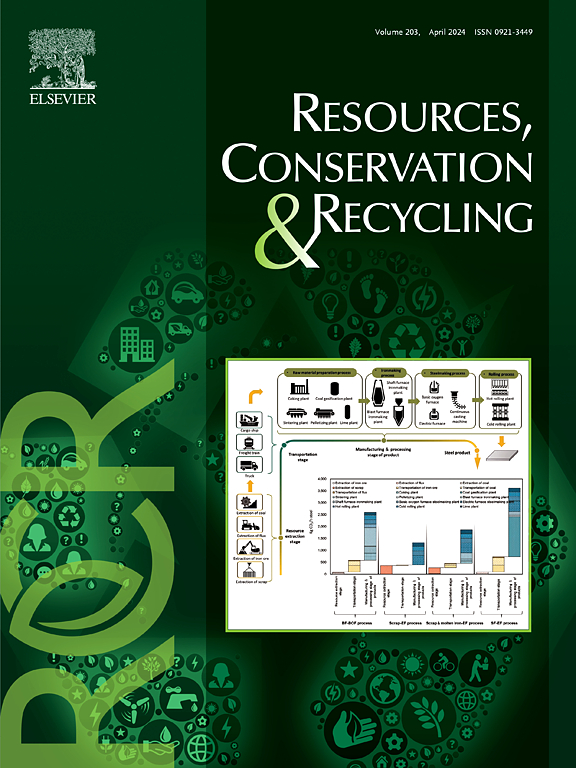Weaving through time: Stocks and flows of textile fibers in China (1978–2022)
IF 10.9
1区 环境科学与生态学
Q1 ENGINEERING, ENVIRONMENTAL
引用次数: 0
Abstract
Textiles are fabrics of daily life, relying on fibers as their core components. Despite growing research on fast fashion’s environmental impacts, systematic quantification of textile fiber flows and stocks remains limited. This study applies dynamic material flow analysis (dMFA) to track flows and stocks of nine types of fibers in China (1978–2022), the global leader in fiber and textile production. The findings indicate a marked transformation in textile production and consumption structure in China through time. China recorded a cumulative production of 1.09 Gt fibers and net export of 437 Mt fibers and textiles over the past 45 years. By 2022, 347 Mt fibers remained as stocks. Current textile waste recovery rate stands at 17 %, predominantly downcycling. Achieving closed-loop fiber-to-fiber recycling demands cross-value-chain collaboration. This quantitative assessment provides the foundation for understanding the complexity of the textile fiber system and paves the way for creating a circular textile fiber economy.

穿越时空:中国纺织纤维的存量与流动(1978-2022)
纺织品是日常生活的面料,以纤维为核心成分。尽管对快时尚对环境影响的研究越来越多,但对纺织纤维流量和库存的系统量化仍然有限。本研究运用动态物料流分析(dMFA)来追踪中国(1978-2022)九种纤维的流动和库存。中国是全球纤维和纺织品生产的领导者。研究结果表明,随着时间的推移,中国纺织品的生产和消费结构发生了显著的变化。在过去的45年里,中国累计生产了1.09亿吨纤维,净出口了4.37亿吨纤维和纺织品。到2022年,仍有3.47亿吨纤维作为库存。目前纺织废料的回收率为17%,主要是再循环。实现光纤到光纤的闭环回收需要跨价值链的合作。这种定量评估为理解纺织纤维系统的复杂性提供了基础,并为创建循环纺织纤维经济铺平了道路。
本文章由计算机程序翻译,如有差异,请以英文原文为准。
求助全文
约1分钟内获得全文
求助全文
来源期刊

Resources Conservation and Recycling
环境科学-工程:环境
CiteScore
22.90
自引率
6.10%
发文量
625
审稿时长
23 days
期刊介绍:
The journal Resources, Conservation & Recycling welcomes contributions from research, which consider sustainable management and conservation of resources. The journal prioritizes understanding the transformation processes crucial for transitioning toward more sustainable production and consumption systems. It highlights technological, economic, institutional, and policy aspects related to specific resource management practices such as conservation, recycling, and resource substitution, as well as broader strategies like improving resource productivity and restructuring production and consumption patterns.
Contributions may address regional, national, or international scales and can range from individual resources or technologies to entire sectors or systems. Authors are encouraged to explore scientific and methodological issues alongside practical, environmental, and economic implications. However, manuscripts focusing solely on laboratory experiments without discussing their broader implications will not be considered for publication in the journal.
 求助内容:
求助内容: 应助结果提醒方式:
应助结果提醒方式:


